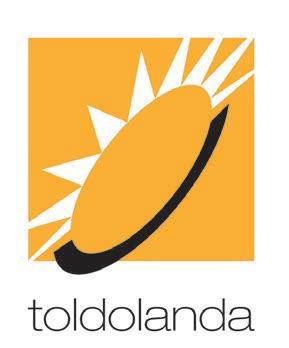
4 minute read
Brazilian gold
by Martin
FOR MORE THAN 300 YEARS GOLD HAS BEEN EXTRACTED FROM BRAZIL. ONCE PORTUGAL’S MOST IMPORTANT COLONY, DURING THE 18TH CENTURY AMAZONIAN GOLD MADE PORTUGAL’S KING DOM JOÃO V THE RICHEST MONARCH IN EUROPE. TODAY THE ILLEGAL ACTIVITIES OF ‘WILDCAT’ MINERS ARE CONTRIBUTING TO THE AMAZON’S DESTRUCTION
Words: CAROLYN KAIN
REVENUE FROM the gold mines of Brazil enabled Dom João V to enjoy a life of luxury and excess. The country’s great wealth can still be seen in the form of gold leaf applied to religious buildings and especially church altars. It is inside the monastery at the Palace of Mafra that the craftsmanship and aesthetic beauty is regarded at its most exceptional. (See AlgarvePlus May 2023.)
In the Algarve, notable examples include the church of São Lourenço on the outskirts of Almancil, the Igreja da Misericórdia in Tavira and the Ermida de Nossa Senhora da Conceição in Loulé. In Lagos, the Municipal Museum includes a tour of the Igreja de Santo Antonio, the most lavishly-decorated church in the region. The gold leaf that covers the wooden altars and statues is combined to stunning effect with blue and white azulejos lining the walls.
Gold was used from medieval times for decorating manuscripts but the gilding of wood or plaster required a different technique. The gold leaf was created by beating a piece of gold between sheets of heavy paper wrapped round with sheepskin. It was then hammered between sheets of parchment until it was 0.1 micrometer in thickness; so fine the least breath of air could carry it away!
The area to be gilded was painted with glue, and once the adhesive surface was partly dried it was ready to receive the gold leaf. Using a pointed tool and a gilder’s brush it was transferred into place and polished with a wad of cotton to give it luster. Looking at the elaborate altars we see today it is easy to imagine the painstaking hours each one must have taken.
The sorry past
The origins of all this gold involved hard labour in atrocious conditions in the Amazon forests of Brazil. At the end of the 17th century, when news reached Portugal that gold dust had been discovered in the streams and rivers, there was a mass exodus of adventurers and would-be millionaires.
At first using sieves, they panned the waters. Many struck lucky. Others looking for bigger fortunes followed the rivers upstream to find the source of the gold. Once a potential vein of gold was discovered, basic hand tools were used to dig into the earth, creating small-scale artisanal mines.
Soon commandeering the assistance of Amerindian people as their slaves, gold mines increased in size and output. The native peasants lacked the physique or stamina to survive the harsh conditions and many of them died. More sturdy African slaves were needed, arriving in their thousands from Guinea and Angola. Undertaking back-breaking and dangerous work they were supervised by their European masters.
Eventually, machinery powered by steam engines pumped water out of the mines, operated lifts and separated the gold from the ore. Mining was happening on an industrial scale with transport via a new road, the Estrada Real that connected the mining district to port cities such as Rio de Janeiro.
Smuggling was rampant, though the Portuguese administrators tried to ensure that every ounce of gold panned from rivers or excavated from the ground was taxed at one fifth of its value. For safety’s sake, ships carrying the gold back to Portugal travelled either as part of a fleet or accompanied by warships deployed for protection. In
Portugal, Dom João amassed an annual income from gold that was said to be 30 times greater than the entire income collected by the King of England.
In 1822, when Brazil gained its independence from Portugal, this source of revenue ceased but gold mining continued to prosper under the supervision of the new Brazilian Government. One of the largest projects at the Gongo Soco mine included 80 skilled miners from Cornwall employed to assist with running the operation. Often arriving with their families on five-year contracts, there was contact between the Cornish mining communities and their adventure-seeking comrades in Brazil.
In 1888, the trafficking of slaves became illegal in Brazil. This was at about the same time the initial gold rush came to an end. There was a resurgence of activity in the 1960s when a number of illegal mines opened. Areas of the forest were demolished and rivers became polluted with mercury used in the process of separating the gold from other elements. Environmental rules were poorly enforced and the deteriorating state of the Amazon began to gain international attention.
Worse was to come when the region suffered during the presidency of Jair Bolsonaro, from 2019 to 2022. A report published by Britain’s Royal Geographical Society states – ‘He (Jair Bolsonaro) all but took his own personal chainsaw to the rainforest’. He dissected the power of the Environmental Ministry, diluted environmental laws, ignored environmental activists and failed to prosecute lawbreakers.
Lula da Silva, Brazil’s new President, will be in office for at least the next four years. He has indicated an absolute commitment to the Amazon and restoration of its ecosystems. One of his earliest initiatives has been to block flights and river transport providing supplies to 20,000 ‘wildcat’ miners extracting gold illegally from mines near the Venezuelan border. In 1500, Brazil was declared a Portuguese colony. Since then, 13% of the Amazon has been destroyed and 17% of it highly degraded. Much of that has happened in the past five years.



Summer Opening Hours

For Coffee Lovers



Café bean17, in the Mercado of Loulé , is a gem – not only because of the houseroasted espresso or cappuccino or the organic kombucha or the wonderful home-baked cakes, but also for the freshly roasted organic arabica coffee beans from Peru and Ethiopia that you can buy. And the new SAGE espressomachine and Eureka coffee-grinders are available at a discount in the bean17 roastery. Make










